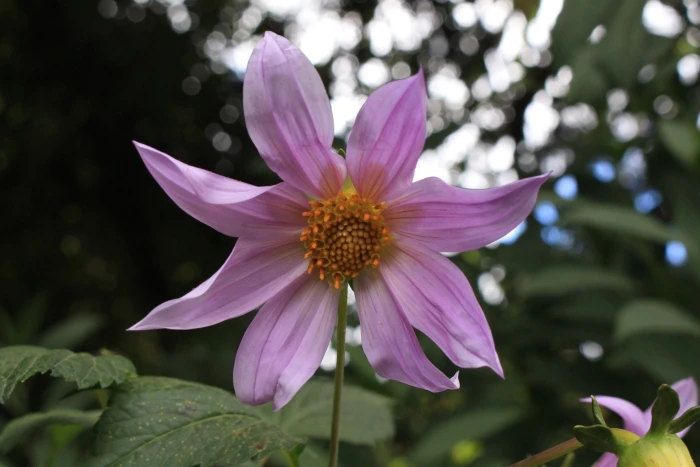Bell Tree Dahlia
(Dahlia imperialis)
Bell Tree Dahlia (Dahlia imperialis)
/
/

Jacob Rehage
Public Domain
Image By:
Jacob Rehage
Recorded By:
Copyright:
Public Domain
Copyright Notice:
Photo by: Jacob Rehage | License Type: Public Domain | License URL: http://creativecommons.org/publicdomain/zero/1.0/ | Rights Holder: Jacob Rehage | Publisher: iNaturalist | Date Created: 2021-02-02T15:13:53-08:00 |







































Estimated Native Range
Climate Requirements for Kenmore, Washington
| This Plant | Your Site | Plant Suitability for Your Location | ||
|---|---|---|---|---|
| • Precipitation | 18" - 142" | 38" | Aquatic | Aquatic |
| • High Temp. | 58°F - 93°F | 75°F | Your summer temperatures are normal for this plant. | Excellent |
| • Low Temp. | 23°F - 70°F | 35°F | Your winter temperatures are normal for this plant | Excellent |
This plant should grow well at your location with about N inches per year (Y minutes per month) of irrigation.
Summary
Dahlia imperialis, commonly known as Bell Tree Dahlia, is a perennial herb, often mistaken as an evergreen tree due to its towering height of 8-12 feet (2.4-3.7 meters) and a width of 4-5 feet (1.2-1.5 meters). Native to cloud forests in Central America and Mexico, it thrives in high-altitude regions with moist conditions. The Bell Tree Dahlia is characterized by its impressive stature and bamboo-like stems, with large, compound leaves that add a tropical flair to the garden. From late fall to winter, it produces showy, bell-shaped purple flowers that hang in clusters, providing a striking display against the foliage.
This species is valued for its rapid growth and ability to bloom in the cooler months when few other plants flower. It is well-suited for creating a tropical effect in temperate gardens and can be used as a focal point or in the back of a border due to its height. While it prefers part shade, it can tolerate full sun in cooler climates. Medium water requirements and well-draining soil are essential for its health. Propagation is typically done by seed or by laying stem cuttings horizontally below the soil. However, it is sensitive to frost and may require protection or lifting in colder regions.CC BY-SA 4.0
This species is valued for its rapid growth and ability to bloom in the cooler months when few other plants flower. It is well-suited for creating a tropical effect in temperate gardens and can be used as a focal point or in the back of a border due to its height. While it prefers part shade, it can tolerate full sun in cooler climates. Medium water requirements and well-draining soil are essential for its health. Propagation is typically done by seed or by laying stem cuttings horizontally below the soil. However, it is sensitive to frost and may require protection or lifting in colder regions.CC BY-SA 4.0
Plant Description
- Plant Type: Tree, Shrub
- Height: 8-12 feet
- Width: 4-5 feet
- Growth Rate: Rapid
- Flower Color: Purple
- Flowering Season: Fall, Winter
- Leaf Retention: Evergreen
Growth Requirements
- Sun: Part Shade
- Water: Medium
- Drainage: Fast
Common Uses
Bee Garden, Bird Garden, Butterfly Garden, Deer Resistant, Hummingbird Garden, Potted Plant, Rabbit Resistant, Showy Flowers
Natural Habitat
native to cloud forests in Central America and Mexico, it thrives in high-altitude regions with moist conditions
Other Names
Common Names:
Scientific Names: Dahlia imperialis, Dahlia lehmannii, Dahlia maxonii, Dahlia dumicola, Dahlia lehmannii subsp. leucantha, Dahlia maximiliana
GBIF Accepted Name: Dahlia imperialis Roezl